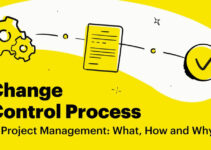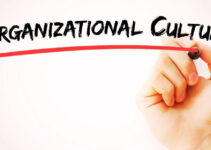Change management is the method of recognizing, planning, and executing changes in the company. It plays a key role in a company’s operations because they face different sets of challenges and opportunities to adapt and evolve. Today, we’ll discuss change management framework examples; key elements involved tips, and benefits.
Change management offers a systematic and structured approach that helps businesses and companies to plan and execute changes effectively. It comprises of a set of strategies, tools, and processes that companies employ to do the following;
- Recognize the need for change
- Developing a change implementation plan
- Analyze and evaluate the impact of the change
Key Elements of Change Management Framework
- Comprehending the need for change and the benefits that the change program offers
- Crafting a change implementation plan in terms of budget, timeline, and communication
- Discussing change with stakeholders and partners through newsletters, presentations, and meeting
- Supporting employees through coaching, mentoring, and training; so that they adjust to the plan
- Analyzing and evaluating the effectiveness of the change program via customer feedback, focus groups, interviews, and surveys
Effective Implementation Tips
- Initiating with implementing changes at the small scale, rather than executing big changes
- Change is a continuous and long-term process and it doesn’t happen overnight; remain patient
- Have a flexible attitude and keep making adjustments in your plan relevant to the needs and requirements
- Celebrate small wins while achieving your targets; it boosts your morale and confidence level
Benefits of Change Management Framework
- High success rate of the change plan
- Limited resistance from employees and stakeholders
- Productive and motivated staff
- Quick implementation of changes with a lower budget
Change Management Framework Examples
Let’s discuss the top change management framework examples; they’re as follows;
Bridges’ Transition Change Management Model
William Bridges developed the Bridges’ transition change management model his model focuses on three stages and they’re as follows;
- Ending
- Neutral zone
- New Beginning
The model allows people, businesses, and companies to evaluate the emotional area of the change initiative and explore meaning and purpose in the new situation and circumstances.
Example – Company’s Location Change
A company is planning to relocate, and its employees are going through a difficult where they have to say goodbye to their colleagues and existing plans. They feel confusion and uncertainty while transitioning, and after that, they reach the neutral zone point. Finally, they would start a new beginning where they follow the new workspace and start growing in the new environment. Companies employ the Bridges model and it helps them to support and facilitate their employees and team members during the transition phase.
Nudge Theory
Cass Sunstein and Richard Thaler developed the Nudge theory. It focuses on implementing small changes in the working environment and impacting the behaviors of employees in a predictable manner. Often, it allows companies to implement small changes that would have a bigger impact on employee behavior.
Example – Tracking Climate Change
Nowadays, businesses and companies are dealing with climate change issues and decreasing the carbon emission rate. It motivates employees and team members to use public transport rather than their own private vehicles to work. However, when it comes to executing small changes in the working environment, the Nudge theory is highly suitable. In order to make employees switch, it takes the following steps;
- Visible public transportation schedule
- Offering more bike racks
PDSA
PDSA also goes by the name of Deming Cycle and it focuses on continuous improvement. It comprises of following elements;
- Plan
- Do
- Study
- Action
Often, it helps businesses and companies to test and execute small changes and learn from the outcomes to make further adjustments and improvements.
Example – Employees’ Recruitment System
PDSA is a highly useful model for companies that are developing a new recruitment system to onboard employees. It allows them to test the pilot program by gathering feedback from managers and employees. However, they keep on testing and adjusting until they receive the desired results based on the feedback.
ADKAR Model
Prosci developed the ADKAR model and it follows the idea that the employees go through five stages in the transition phase and they’re as follows;
- Awareness
- Desire
- Knowledge
- Ability
- Reinforcement
It allows companies to support and facilitate employees and team members through the change process to make sure that the changes are sustainable over time.
Example – Launching Company’s New Policy
When a company is launching a new policy or procedure, then the ADKAR model is highly useful. It makes sure that the employees and team members are aware of the change program and comprehend why the changes are necessary. In fact, it motivates them to adopt new tools, equipment, and policies to execute the changes. Finally, it provides positive reinforcement for the continuous adaptation of policy over time.
Kubler-Ross Change Curve
Elizabeth Kubler Ross developed the change curve model and it outlines that people go through five stages of grief while changing and they’re as follows;
- Denial
- Anger
- Bargaining
- Depression
- Acceptance
Often, it allows companies to comprehend how people are reacting to the changes and develop strategies to facilitate the change process.
Example – Company’s Communication Plan Development
Many tech companies are launching layoffs of employees at a mass scale. The Ross model is highly useful for them to comprehend that the employees experience various emotional phases. However, the model helps them to develop an effective communication plan and offers them support while dealing with changes.
Conclusion: Change Management Framework Examples
After an in-depth study of the change management framework examples; we have realized that the change management framework offers you a systematic approach. If you are learning about the examples of change management framework; then you should keep in mind the abovementioned different types of examples to deal with various types of changes.
Ahsan is an accomplished researcher and has a deep insight in worldly life affairs. He goes Live 3 days a week on various social media platforms. Other than research writing, he’s a very interesting person.


